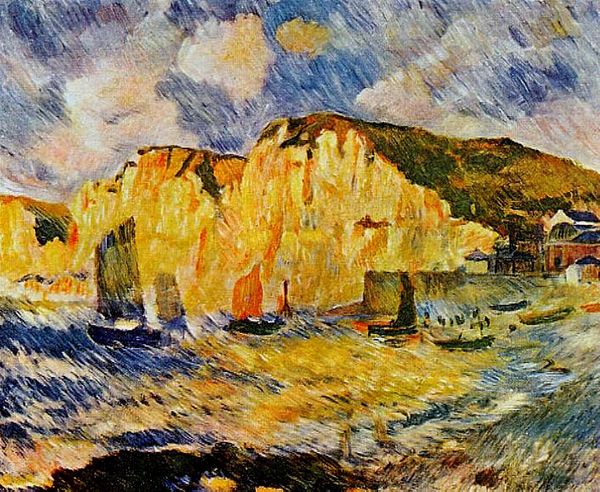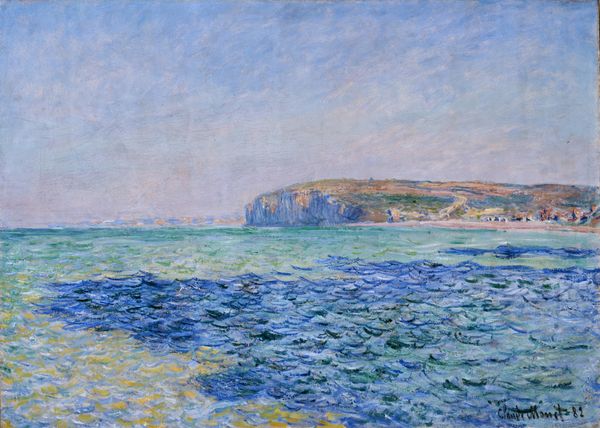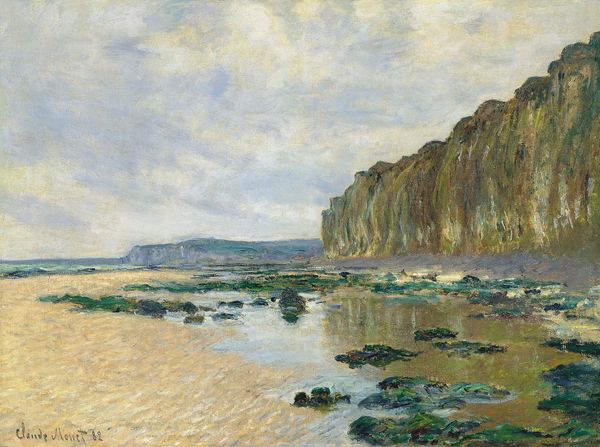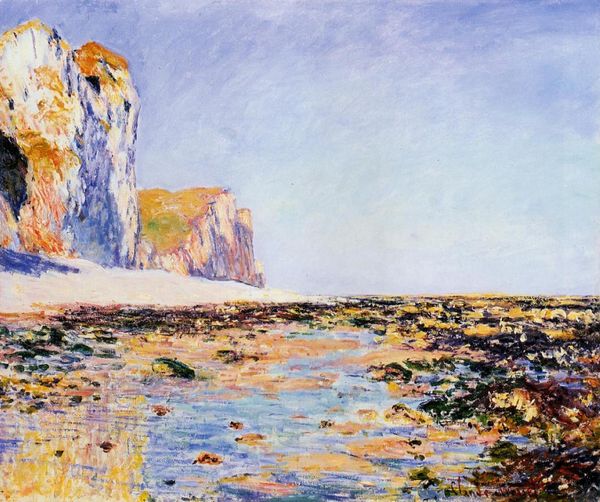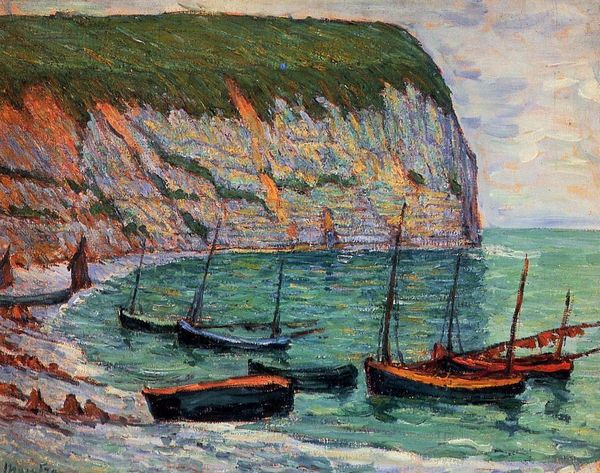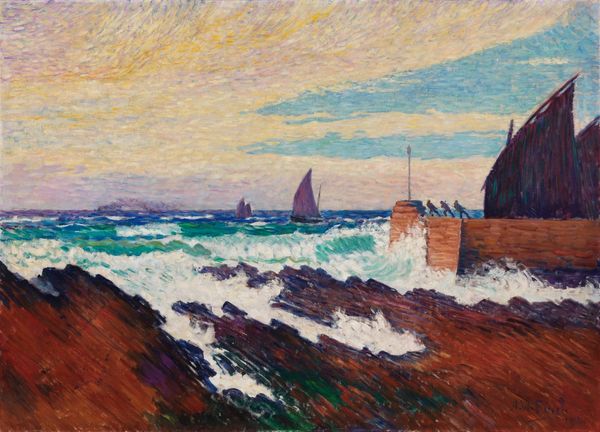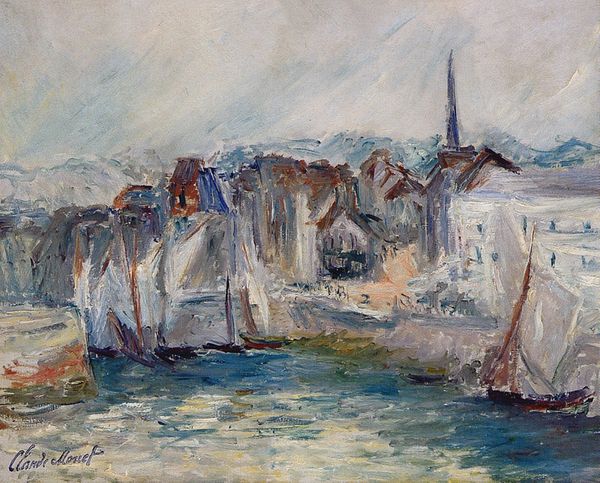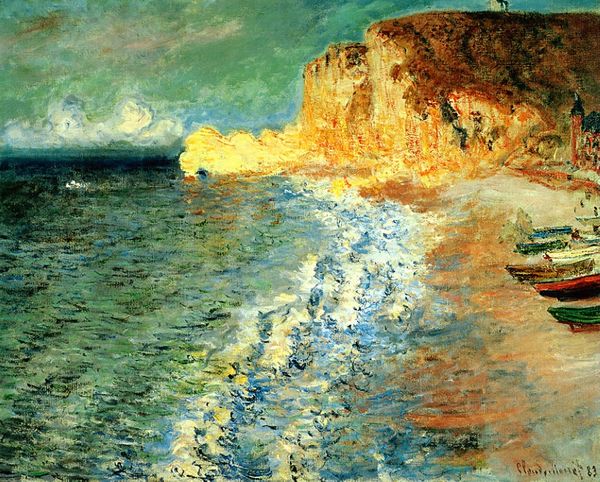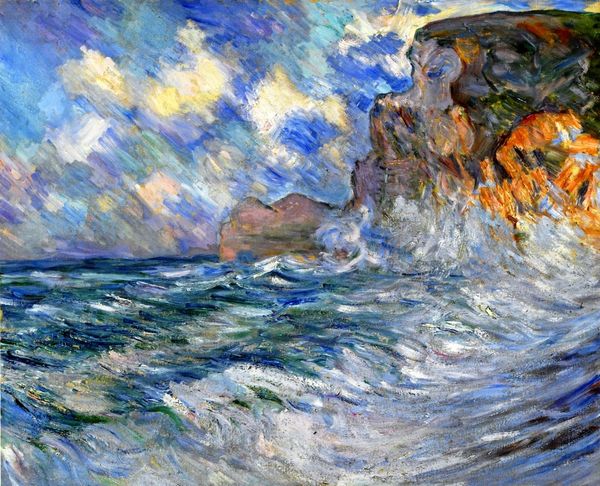
Copyright: Public Domain: Artvee
Curator: Ah, look at this lively scene. This is Pierre-Auguste Renoir’s "Sea and Cliffs," an oil painting created around 1885. He really captures something unique. Editor: The energy just bounces right off it! Those choppy brushstrokes, especially in the water, give such a raw, immediate feeling. I can almost taste the salty air. Curator: Exactly. Renoir, known for his plein-air landscapes, wasn't just painting a picture, he was recording an experience. It’s said that these pieces were meant to capture and recreate his feeling while in Northern France at this time in his life. The canvas captures a brisk ocean with boats and rugged cliffsides and the small, harbor town nestled amongst the rocky land. Editor: Those cliffs—they’re so solid, and yet he paints them with these almost feathery strokes. It’s like he’s trying to catch the light playing on them, the constant flux. What is it about the play of light? It looks like a summer's day, but a little tempestuous. Curator: Absolutely. It speaks to the artistic moment of his time. Light becomes almost its own subject in paintings of the Impressionist era and Renoir demonstrates a new skill in his collection of work when he utilizes the quick-handed movements of the paintbrush. Look closely and notice how he paints the white chalk of the rockface: yellow! He sees what most don't, which can be taken to speak about this new approach of artwork becoming about interpretation instead of accurate depictions. It makes this work one of interest as we reflect on the evolution of Renoir in later stages of his artistic life. Editor: There's such a great sense of freedom in it too. Renoir wasn't constrained by what he *thought* the landscape should look like. He went there, felt the wind, saw the light, and then just, well, *painted* it. Curator: Yes, it reflects the evolving attitude of the public and artist toward what paintings of the time represented. Landscapes were becoming a more socially-accepted art and the artist’s response was just to deliver. This piece encapsulates the essence of Impressionism, doesn’t it? Editor: It really does. Looking at it makes you want to breathe deep and just… be present in the scene, not just to view it on a surface-level basis. I love his creative process to interpret how these environmental scapes and moments of the everyday can offer new vantage points of the beauty that our nature-world has. I feel restored just gazing upon its energy. Curator: It is really easy to be taken in by such beauty, isn’t it? I could admire Renoir’s vision and talents for hours. I like how his style captures such simplistic, yet interesting views into nature's elegance.
Comments
No comments
Be the first to comment and join the conversation on the ultimate creative platform.
